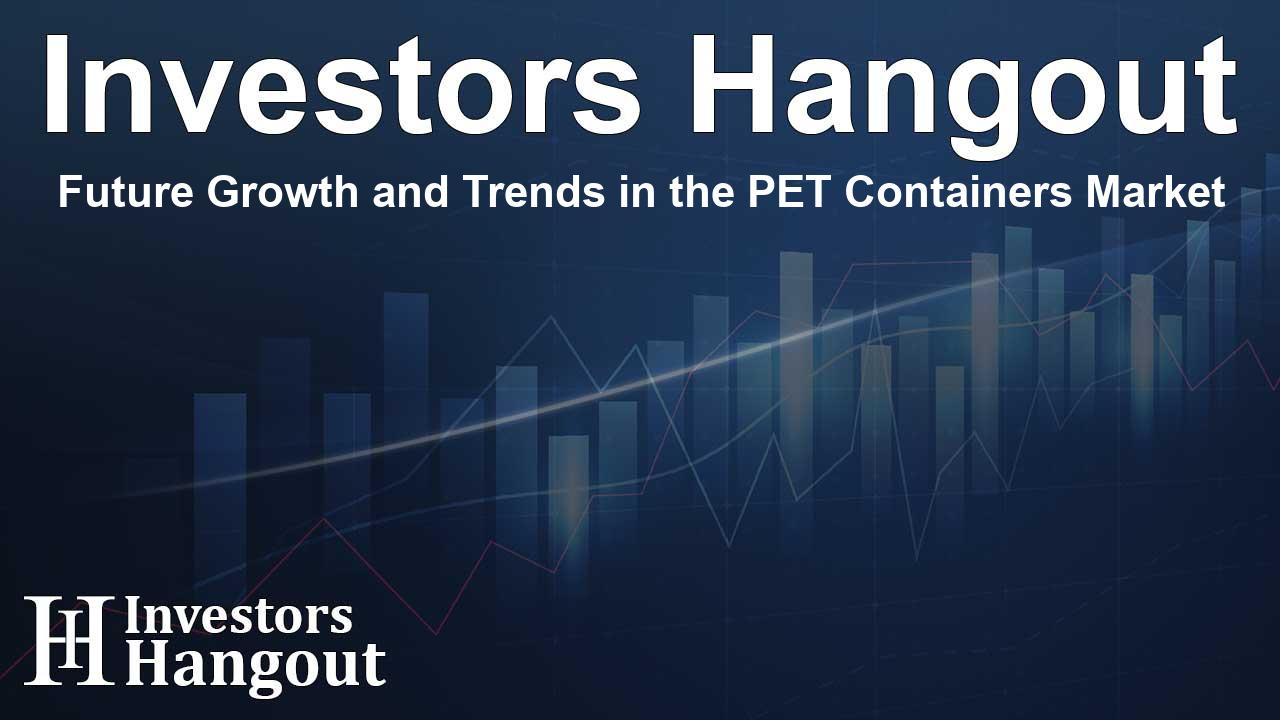Future Growth and Trends in the PET Containers Market

Exploring the PET Containers Market Growth
The global PET containers market is poised for remarkable growth, with analysts estimating its size will surge from USD 73.2 billion to USD 106.3 billion, showcasing an annual growth rate of 3.8% over the next decade. Demand for PET (Polyethylene Terephthalate) is being fueled by increased consumer preferences in various sectors, including food and beverages, pharmaceuticals, and personal care products. The emphasis on lightweight, durable, and recyclable containers is shaping the future of packaging.
Key Market Drivers
Consumer demand plays a pivotal role in propelling the popularity of PET containers. A remarkable shift toward sustainability has led to widespread acceptance, as consumers are increasingly gravitating towards products that minimize environmental impact. The PET container, characterized by its recyclability and structural integrity, presents an ideal alternative to traditional materials. This growing consciousness regarding the environment drives the need for practical and eco-friendly packaging solutions.
Beverage Sector's Influence
The beverage industry continues to dominate PET container consumption, capturing over 47% of the market share. The attributes of PET, such as its efficient carbonation retention, make it the preferred choice for soft drinks, ensuring minimal fizz loss. Moreover, innovative and ergonomic designs enhance the drinking experience, solidifying the role of PET containers in the beverage sector.
Health and Safety Regulations
Stricter health and safety regulations across the globe further endorse the use of PET containers. Authorities such as the US FDA and the European Food Safety Authority have recognized PET as a safe material for food and beverage contact. Its non-toxic properties and resistance to heat make it reliable for packaging consumables. With increasing scrutiny on packaging materials, PET stands out due to its safety attributes.
Emerging Trends in the Industry
As we look towards the future, several trends are expected to significantly impact the PET container market. Notably, the adoption of lightweight PET bottles is gaining traction. Companies are opting for reduced material usage, which not only cuts production costs but also aligns with corporate sustainability objectives. Additionally, the trend towards recycling PET and integrating recycled PET (rPET) into new products is anticipated to accelerate, as industries push for circular economy practices.
Smart Packaging Initiatives
Technological advancements are also reshaping the PET container landscape. The integration of smart packaging technologies, such as QR codes and RFID tags, offers consumers better product information and enhances tracking systems. Such innovations pave the way for PET containers to evolve beyond traditional packaging, turning them into interactive tools that foster consumer engagement.
Consumer Preference for Transparency
Modern consumers exhibit a strong preference for transparent packaging, viewing it as a reflection of quality and freshness. High-clarity PET containers serve this need effectively, becoming a staple in food and beverage products. Their aesthetic appeal not only fosters trust but also opens doors for brands to showcase their products effectively.
Challenges and Opportunities Ahead
While the PET containers market shows incredible promise, it is not without challenges. The rise in environmental awareness calls for innovative solutions that prioritize sustainability. Manufacturers need to continuously adapt by incorporating recycled materials and enhancing sustainability features in production processes. The next decade is set to be transformative, balancing consumer needs with eco-friendly advancements.
Frequently Asked Questions
What factors are driving the growth of the PET containers market?
The growth is driven by increased consumer demand for sustainable packaging, innovations in container design, and strict health and safety regulations.
Which sector continues to dominate the PET container market?
The beverage sector remains the largest consumer, accounting for over 47% of total PET container usage.
How does consumer preference influence packaging choices?
Consumers are leaning toward transparent, eco-friendly packaging, reinforcing the demand for high-clarity PET containers.
What role do regulations play in PET container adoption?
Regulatory bodies have approved PET for food and beverage usage due to its safety, prompting increased consumer confidence.
What innovations are anticipated in the PET industry?
Expect to see advancements in lightweight designs, smart packaging, and the integration of recycled materials for sustainability.
About The Author
Contact Henry Turner privately here. Or send an email with ATTN: Henry Turner as the subject to contact@investorshangout.com.
About Investors Hangout
Investors Hangout is a leading online stock forum for financial discussion and learning, offering a wide range of free tools and resources. It draws in traders of all levels, who exchange market knowledge, investigate trading tactics, and keep an eye on industry developments in real time. Featuring financial articles, stock message boards, quotes, charts, company profiles, and live news updates. Through cooperative learning and a wealth of informational resources, it helps users from novices creating their first portfolios to experts honing their techniques. Join Investors Hangout today: https://investorshangout.com/
The content of this article is based on factual, publicly available information and does not represent legal, financial, or investment advice. Investors Hangout does not offer financial advice, and the author is not a licensed financial advisor. Consult a qualified advisor before making any financial or investment decisions based on this article. This article should not be considered advice to purchase, sell, or hold any securities or other investments. If any of the material provided here is inaccurate, please contact us for corrections.
